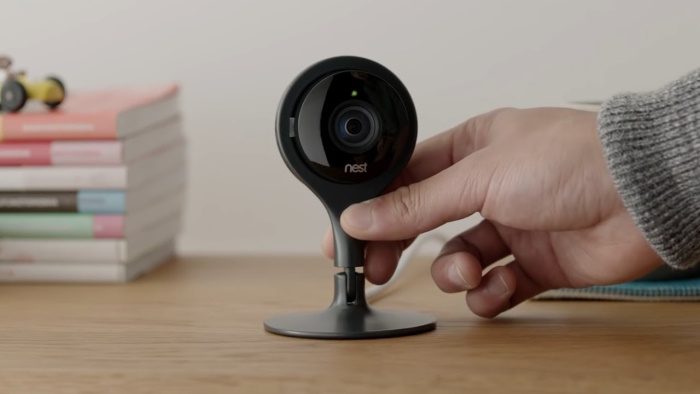You see, our homes are made of different types of materials, and some of them will cause Wi-Fi problems. The same goes for the decorations we choose to beautify the dwelling. Now, we’re not going to tell you what materials to use when building a home, or the types of décors to purchase. This article is about explaining what can cause your Wi-Fi signal to fluctuate, which in turn, causes a slow wireless internet connection.
Things in your home that can block or obstruct Wi-Fi signal
Finding out what is causing problems with your Wi-Fi connection at home can be difficult. However, it is likely that some of the objects and materials in your house are the culprits. Therefore, you may have to make changes where possible, or simple adjustments.
1] Fish Tanks
Like it or not, if you have one or more fish tanks in your home, then chances are we’ve found the reason why your Wi-Fi signal is so weak. For those who aren’t aware, water is very effective at blocking signals, so if you have your Wi-Fi router close to a fish tank, you should remove it right away. Read: How to increase WiFi Speed and Signal strength and coverage area.
2] Mirrors
You might not have known this, but Mirrors do interfere with Wi-Fi signals, surprisingly enough. The problem here is the coating that transforms glass into a mirror. From our understanding, the coating is metallic, and metals and your Wi-Fi signals do not work well together. Note that larger mirrors will have a greater impact than smaller and older ones, so keep that in mind.
3] Concrete Walls
Many houses around the world are built using concrete structures, and maybe yours is no different. If that is the case, it could be the reason why your Wi-Fi signal is weaker than expected. This is because signals of any kind find it very difficult to pass through concrete walls and floors, especially if they are thickly designed. We suggest moving your router to an open space rather than behind a wall for better Wi-Fi signal penetration throughout the house.
4] Analog Video Senders
Those who have analog video sender devices tucked away in their homes should consider the possibility they are causing problems for Wi-Fi. These devices are usually wireless security cameras or anything that can transmit pictures and videos via satellite or cable to a computer monitor or TV. Because they have a wide reach, they can affect your neighbor’s Wi-Fi signal, and if your neighbor has one, it can affect yours.
5] Home Appliances
Because large household appliances are made out of metallic and electrical components, they can definitely obstruct your Wi-Fi signal. The best thing to do here is to move your router from being in close proximity to your appliances, especially the refrigerator since it is usually the largest.
6] Books and Bookshelves
A bookshelf by itself is not much of a problem, but when it is populated with books, that’s when you may face problems with your Wi-Fi. You see, books are very dense, and when multiple books are close to each other, you’ve basically created a large signal dampener. To solve this problem, avoid placing your router on a bookshelf that is heavily occupied with books.
7] Metal Decorations
If you have a lot of metal decorations laced around your home, then you must ensure they do not surround the router. This may cause major problems where the Wi-Fi signal penetrates one section but fails to do the same for other parts of the house. Wi-Fi extenders, if placed in the same position, will not help either, so please keep all of this in mind.
8] Metal Blinds
We have come to understand that metal blinds can cause issues with Wi-Fi signal penetration ability. If you’re outside but unable to connect properly to your Wi-Fi, then the metal blinds over the window could be the cause. To solve this issue, then, we suggest removing the metal blinds in favor of non-metallic options. You can also consider keeping the blinds up whenever you’re outside to see if that helps in any meaningful way.
9] Bluetooth
Wireless devices based on Bluetooth can interfere with Wi-Fi signals. That is because Bluetooth makes use of a technology known as frequency hopping, which means, there are times when it will jump on the frequency band your wireless router is on. So, what is it you should do? Well, if you are not using Bluetooth at the moment, then turn it off until it’s time to do so.
10] Microwave Ovens
For those who aren’t aware, microwave ovens tend to use electromagnetic waves of 2.4 GHz when heating food. Now, the older 802.11 b/g/n Wi-Fi standard uses the same 2.4Ghz frequency, so you can see how these appliances can hugely affect your Wi-Fi signal. The best way to solve this problem is to switch to 5GHz Wi-Fi if you can. Doing this is not ideal for everyone, but in time, 5GHz devices will become more affordable. Read: How to find out the exact Wi-Fi signal strength on Windows
What affects the Wi-Fi signal?
Your signal can be affected due to the distance between your wireless adapter and the wireless router. A general rule of thumb we’ve come to find out is that if the user doubles the distance between the client and the router, internet throughput decreases by around one-third. Read: Change WiFi Roaming Sensitivity or Aggressiveness to improve Wi-Fi reception & performance
Do thick walls block Wi-Fi?
Different building materials can block Wi-Fi signals to varying degrees. However, we believe thick concrete walls are more effective at blocking signals, so this is something you should keep in mind. Read: How to fix poor WiFi performance.


